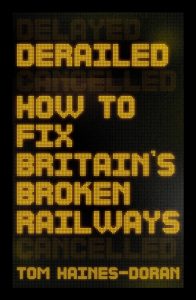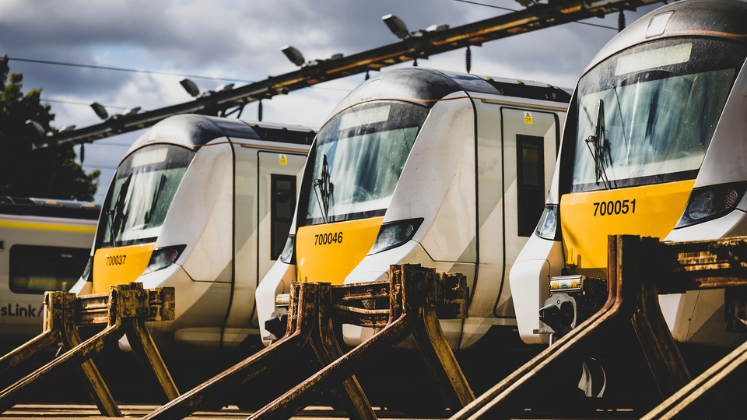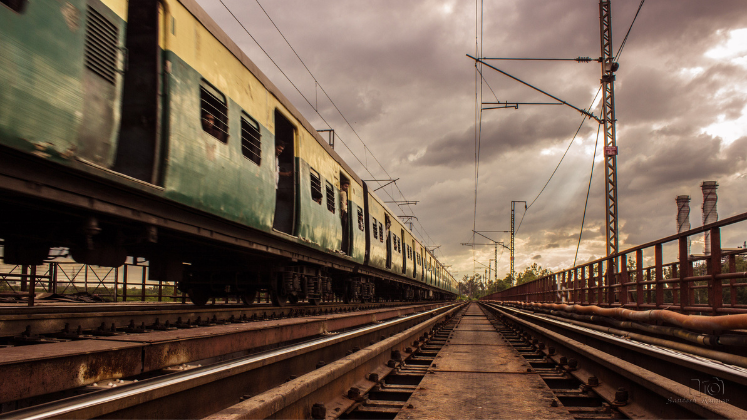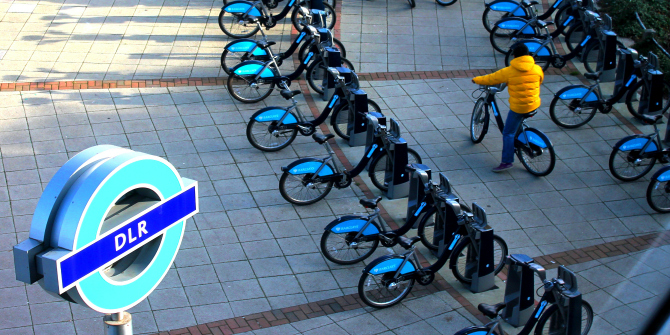In Derailed: How to Fix Britain’s Broken Railways, Tom Haines-Doran offers a new examination of the challenges facing Britain’s railway system and a vision for how to fix them. This timely book is a refreshing take on Britain’s railways post-privatisation that convincingly makes the case for passenger-led reform, writes William Law.
Derailed: How to Fix Britain’s Broken Railways. Tom Haines-Doran. Manchester University Press. 2022.
 Find this book (affiliate link):
Find this book (affiliate link):![]()
Tom Haines-Doran’s Derailed: How to Fix Britain’s Broken Railways is a sobering reminder that Britain’s railways do not bring joy to most people waiting for trains – even if a recent trainspotting trend has made this seem in vogue. For many, the routine failure of Britain’s railway system has serious implications. Frequent delays cancel business meetings and social events. In worst-case scenarios, people lose their jobs. Why, then, is Britain’s railway system ‘broken’? Moreover, what can we do to fix it?
Derailed answers these questions across five chapters. Writing for ‘the millions of people who rely on Britain’s railways’, Haines-Doran addresses problems raised by passengers on a delayed train, all of whom have different stakes in the railway’s operation (2). These everyday issues cover topics including punctuality (Chapter One), the cost of fares (Chapter Two), strikes (Chapter Three) and accountability (Chapter Four). Derailed’s closing Chapter Five ends on a note of cautious optimism, outlining a roadmap for the railway’s future.
Underpinning Derailed’s structure is the view that privatisation has negatively impacted Britain’s railways. Specifically, Haines-Doran argues that the ‘social and environmental benefits’ of the national rail network have been overlooked due to a myopic focus on running it solely as a commercial operation (9). While similar claims have been made before, Derailed reconsiders these debates alongside contemporary challenges such as the climate emergency and worsening inequality. Readers should expect the usual suspects – train operating companies (TOCs) chasing profit margins, for example – but Haines-Doran lays the blame mostly at the door of successive governments intent on privatisation at whatever cost to the taxpayer. The continued bailing out of TOCs is just one reason why the author considers the privatisation project a failure.

Image Credit: Image by Jon Pauling from Pixabay
Derailed illustrates this failure through everyday issues facing passengers. Its first chapter addresses operating capacity and poor punctuality. The author explains how infrastructure investment – which initially declined post-privatisation – has failed to keep up with increasing passenger volume. One example is Railtrack, the former quasi-private entity whose failure to adequately maintain infrastructure was revealed by the fatal Hatfield disaster of 2000. Here, Haines-Doran’s expertise as a political economist is particularly helpful in untangling the otherwise confusing web of international finance that enabled Railtrack’s existence. This also applies in Derailed’s second chapter, which explains how the overcomplicated railway ticketing system causes extortionate fares that price would-be passengers out of the network. Readers will find this section especially useful for demystifying the ticketing system ahead of the government’s plans to scrap return tickets.
Derailed’s third chapter is equally timely in its aim to circumvent the ‘headlines and clickbait’ commonly associated with rail strikes – an issue on which the public remains divided (58). Haines-Doran provides a fair account, acknowledging that rail unions such as the Rail, Maritime and Transport Union (RMT) could do more to counter the ‘divide-and-rule tactics’ employed by rail bosses (69). Referring to the driver-only operation dispute that began in 2016, the author praises the work of ‘disability activists and fledgling passenger campaigns’ but notes that RMT ‘did little to foster solidarity among passengers and the general public’ (75). This section highlights how important this is while staffing cuts threaten to limit the accessibility of rail travel. Many stations would be inaccessible for disabled passengers without the assistance provided by train guards, reminding us that inadequately staffed railways have real impacts on passengers. As the following chapter demonstrates, collective action is often the only way passengers can push back against such top-down decision-making.
While Derailed’s first four chapters persuasively outline the failures of privatisation, its concluding section provides the most interesting nuance to Haines-Doran’s overall argument. Here, the author contends that we face a ‘particular historical juncture’ that necessitates a new role for the railways. This chapter argues that a key question should decide the railway’s future in light of the climate catastrophe and cost-of-living crisis: what should the railways be for?
For Haines-Doran, this tipping point calls for a ‘just transition’, a shift that aims to minimise carbon emissions and reduce inequality (111). This move towards a more sustainable network could be straightforward in practice: electrification, expansion and reinstating previously closed lines are some of the ideas discussed here (119-23). Several others are particularly bold. A fully integrated network all the way down to last-mile cycle lanes is just one glimpse into a future where a National Climate Service coordinates a joined-up national transport system. Although some might dismiss the need for further unification, few could disagree that ‘business as usual is over’ (132). For Haines-Doran, tentative proposals do not go far enough. ‘Great British Railways’ – the now-outdated public body designed to oversee timetables and ticketing – is not the ‘ambitious plan’ it claims to be. As this section contends, such initiatives show that the privatisation project is yet to bring anything radically new to the table.
This forward-looking conclusion leaves no room for nostalgia for the ‘patch-it-and-mend misery of the state railway system’ (134). However, some may feel that valid criticisms of late British Rail (BR) and its management fall to the wayside amid Derailed’s broader thrust. Hatfield, for example, is perhaps dealt with too swiftly. Derailed acknowledges BR’s lack of a sufficient asset register before Railtrack took over in the mid-1990s, but its reliance on workers who ‘carried knowledge of track conditions around in their heads’ points to wider issues even before privatisation crept in (19). In this sense, Derailed’s framing perhaps limits its scope: Railtrack could also be held up for its poor organisation and lack of technical expertise compared to BR, but this would fit awkwardly in Derailed’s opening section on punctuality.
Nevertheless, Derailed is a refreshing take on Britain’s post-privatisation railways and convincingly makes the case for passenger-led reform. While primarily aimed at passengers and rail users, Derailed will find broad appeal with those interested in transport more generally, especially those intrigued by its role in the fight against climate change. Equally, this book would benefit undergraduates and more advanced scholars keen to understand the puzzle pieces of Britain’s privatised rail network. Readers interested in the finer grain of BR’s gradual splintering might also explore Terry Gourvish’s two volumes on Britain’s railways pre- and post-1997, while Christian Wolmar’s Broken Rails offers further detail on privatisation’s failures.
As Derailed makes clear, most passengers are aware of the issues plaguing Britain’s railways. Haines-Doran shows that comprehending them is much more difficult – perhaps intentionally so (86-87). However, Derailed’s call for a ‘just transition’ towards a more sustainable, reliable transport system is gaining momentum (111). Even rail bosses admit the current situation ‘isn’t good enough’. Amid the existential crisis facing the railways post-pandemic, Derailed argues that the solution is not further cost-cutting but new ideas that bring the network up to speed with evolving long-term challenges. Part-analysis, part-manifesto, this book imagines a ‘light at the end of the tunnel’ for Britain’s railways (101). More importantly, it offers a plan for how we might get there.
Note: This review gives the views of the author, and not the position of the LSE Review of Books blog, or of the London School of Economics and Political Science. The LSE RB blog may receive a small commission if you choose to make a purchase through the above Amazon affiliate link. This is entirely independent of the coverage of the book on LSE Review of Books.
Banner image credit: Photo by Daniel Zacatenco on Unsplash






